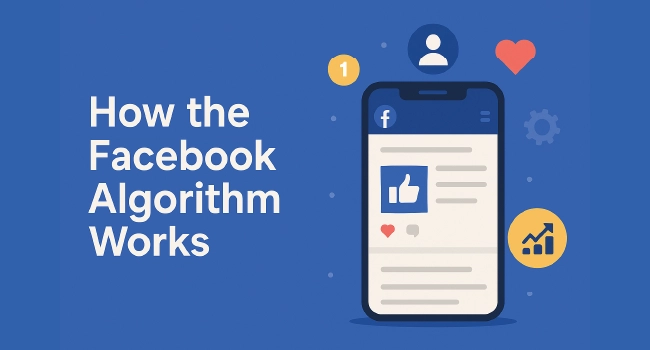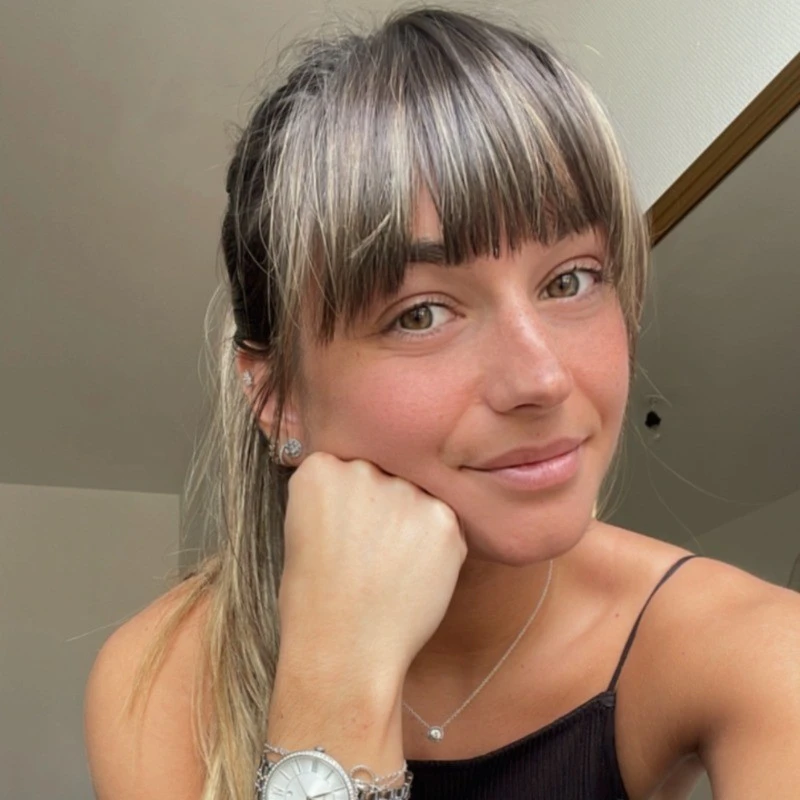
The Facebook algorithm is the system that decides which posts, videos, and Reels show up first when you log in. It looks at your activity, the people you engage with, and the type of content you usually spend time on. Every choice it makes is designed to keep your feed relevant and engaging.
Think of it as a digital guide that learns from what you like and then brings more of it to your screen. By understanding how it works, you can spot what helps your content reach further and what can hold it back.
What Shapes Your Feed
The Facebook algorithm sorts through thousands of possible posts to decide what you'll see. It doesn't show everything at once. Instead, it ranks content based on a few clear signals.
Here's how it works in practice:
-
Relationships – You're more likely to see updates from friends, family, or pages you interact with often.
-
Content type – If you watch videos more than you click photos, Facebook will push more videos to you.
-
Recency – Newer posts carry more weight, so your feed feels fresh.
-
Predicted actions – The system estimates if you'll like, comment, or share a post before you even see it.
If you've ever wondered how does fb works behind the scenes, this is the foundation. Think of it as a giant prediction engine: it studies what you've clicked, watched, or reacted to, and then bets on what will keep you engaged next.
The Facebook Algorithm for Reels and Video

The Facebook algorithm gives special attention to video, especially Reels. Meta has shifted all uploads into the Reels system, which means both short clips and longer videos follow the same rules. For creators, that makes understanding these signals even more important.
When ranking Reels and videos, Facebook's algorithm looks closely at:
-
Watch time – the longer people stay, the stronger the signal.
-
Replays – a video watched twice often gets boosted.
-
Shares – if viewers send it to friends, it gains extra reach.
-
Satisfaction – surveys and actions like "Show More" tell the system what feels rewarding.
Example: if someone rewatches your 20-second Reel three times, the system sees high value and recommends it more widely. That's why creators focus so heavily on strong hooks and repeat-worthy content.
Content Distribution Guidelines and Demotions
The Facebook algorithm doesn't just reward good content. It also reduces the reach of posts that break distribution rules. These aren't always violations that get removed, but they do make your posts less likely to show up.
Here are the main categories:
-
Engagement bait – posts that beg people to like, comment, or tag friends.
-
Clickbait – headlines that hide key details or exaggerate results.
-
Watchbait – videos with misleading titles or thumbnails.
-
Unoriginal content – reposts with watermarks or without meaningful changes.
To keep things simple, here's a quick reference:
| Risk Content | Example | Safer Rewrite |
|---|---|---|
| Engagement bait | "Tag 3 friends to win!" | "Who would you share this with?" |
| Clickbait | "You won't believe what happened..." | "Here's what actually happened..." |
| Watchbait | "Wait until the last second to see!" | "Watch through to see the ending." |
| Unoriginal content | TikTok repost with watermark | Add voiceover, edits, or context. |
By staying clear of these traps, you help your posts travel further and avoid sudden drops in visibility.
Policy and Product Shifts That Impact Reach
The Facebook algorithm also reacts to bigger changes in platform policy. These shifts shape what content spreads and what struggles to find an audience.
Here are some of the most important updates:
-
Fact-checking to Community Notes – In the United States, Meta replaced third-party fact-checkers with Community Notes. This gives more context instead of just blocking reach.
-
Less political content in recommendations – Political posts are still allowed, but they appear less often in suggested content to non-followers.
-
Stricter originality enforcement – Reposts without meaningful edits can lose both reach and monetization options.
Key Metrics and Signals to Track

The Facebook algorithm pays close attention to how people react to your content. By knowing which signals matter most, you can focus on improving the right numbers instead of chasing vanity metrics.
Here are the key ones:
-
Retention and completion rates – If people finish your video or watch until the end of a Reel, it's a strong positive signal.
-
Shares and reshares – When viewers send your post to friends, the system rewards that with more reach.
-
Loyalty signals – Repeat viewers and people who search for your page show that your content builds lasting interest.
-
Negative feedback – Quick swipes, post hides, or reports signal that content doesn't fit, which limits its visibility.
Example: a Reel that's replayed twice by the same viewer often gets promoted more than a video that was clicked but abandoned in seconds.
Strategies to Increase Reach
The Facebook algorithm rewards content that holds attention and sparks interaction. You can give your posts the best chance by applying a few simple tactics.
Start Strong
The first three seconds decide if people stay or scroll away. Use a bold line, a question, or a striking visual.
Create Series or Themes
When people return for the next part, the system sees loyalty and boosts your future posts.
Test Creative Elements
Switch thumbnails, captions, or hooks to see what drives higher watch time. Even small changes can lead to big shifts.
Rewrite Risky Content
Avoid phrases that sound like engagement bait or watchbait. Instead, frame your message in a way that feels natural and useful.
Think of each post as a test. Every experiment gives the system more data to learn what works for your audience.
And here's a shortcut: if you want to spark real conversations around your posts right now, you can buy Facebook comments through our service. This gives your content an immediate boost in engagement, which signals quality to the system. The best part? All comments come from real accounts, so they feel natural, authentic, and help you stand out in a crowded feed.
Common Myths About the Facebook Algorithm
The Facebook algorithm is often misunderstood, and that confusion leads to wasted effort. Clearing up myths helps you focus on what truly drives results.
Here are the common myths debunked:
-
"The Feed is chronological." – You can switch to a chronological view in the Feeds tab, but the main Feed is ranked. The system predicts what will matter most to you and puts that first.
-
"Likes are the strongest signal." – The system values comments, shares, and watch time much more than a simple like.
-
"Longer videos always perform better." – Performance depends on retention. A 20-second Reel replayed three times can outrank a 5-minute video that people quit early.
-
"Posting more often guarantees reach." – Frequency alone doesn't help. Quality and originality matter far more than flooding your page with content.
-
"External links are treated the same as native content." – Reports show that less than 3% of feed views involve external links. Native posts almost always earn more visibility.
-
"The algorithm hides posts from friends." – It doesn't block them; instead, it prioritizes the ones you interact with most. If you engage with someone rarely, you'll simply see them less often.
Conclusion
The Facebook algorithm is built to show people content that feels relevant, rewarding, and worth sharing. When you understand the signals it values, you can create posts that fit the system instead of fighting against it.
A simple way to remember what works is the E.A.R. framework:
-
Engage – Create posts that spark comments, shares, and conversations.
-
Avoid – Stay clear of engagement bait, clickbait, or copied content that gets downranked.
-
Retain – Focus on retention and loyalty so people come back for more.
By following this approach, you build a feed presence that grows steadily. Every improvement adds up, and each step helps your content reach the people who matter most.
FAQs | Frequently Asked Questions |
Can I control what I see more often in my feed?
Yes. Use the “Show more” or “Show less” buttons on posts. Adding friends and pages to your Favorites also helps them appear higher.
Do groups follow the same ranking rules as the feed?
Not exactly. Group posts still use ranking signals, but activity inside the group (comments, likes, reactions) carries more weight.
Does posting at certain times help with reach?
Timing affects visibility when your audience is active. Posting when most followers are online increases early engagement, which the system notices.
Are ads affected by the algorithm in the same way as organic posts?
No. Ads follow a bidding system, not organic ranking. However, relevance and engagement still impact how well an ad performs.
What role do stories play in reach?
Stories are ranked separately from the main feed. They depend heavily on direct interactions, such as taps, replies, and views, to decide the order.
